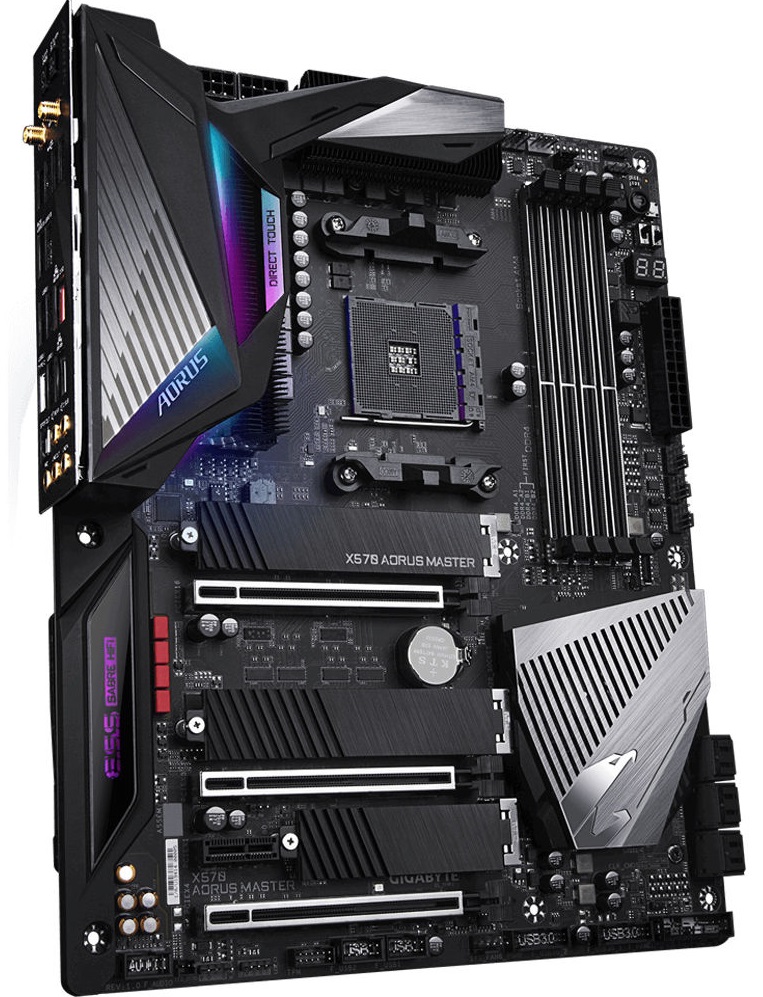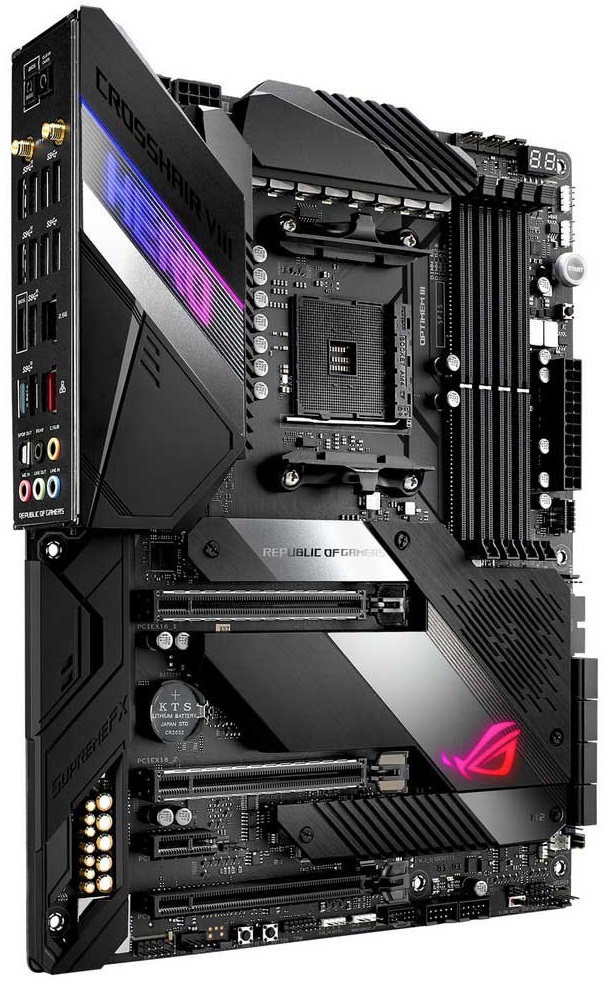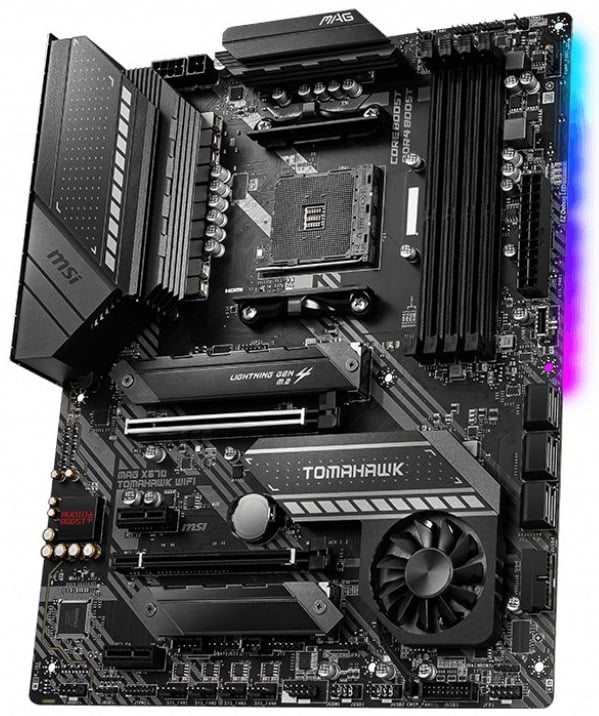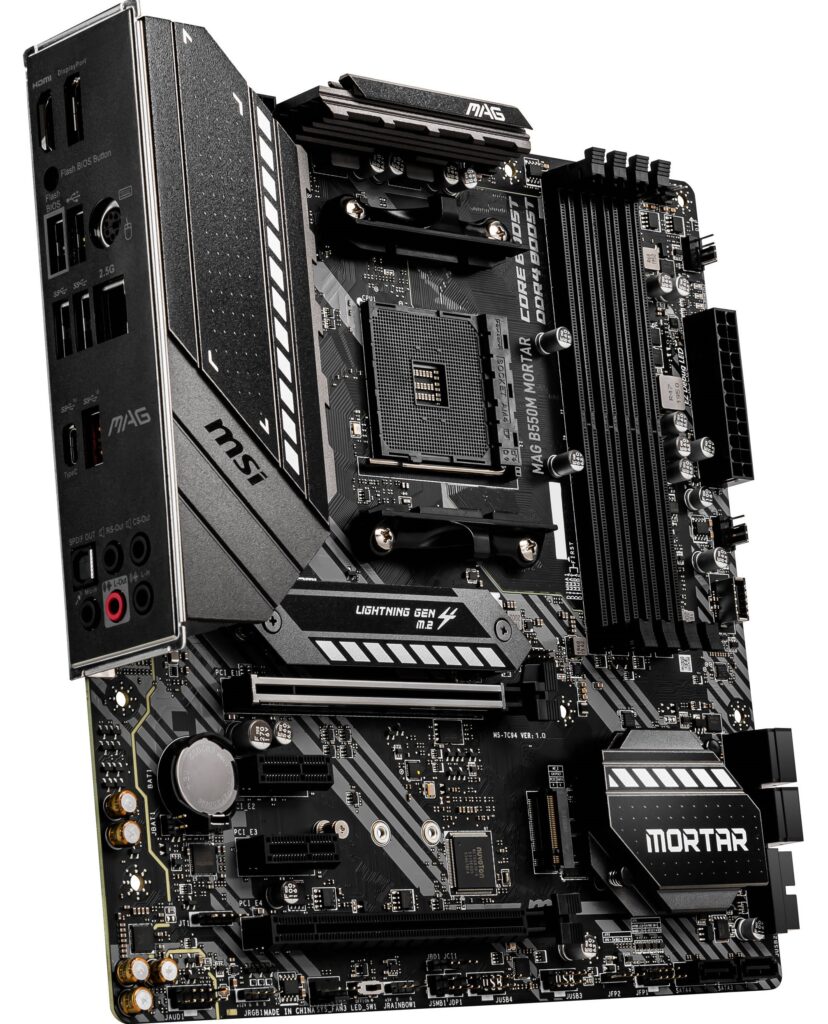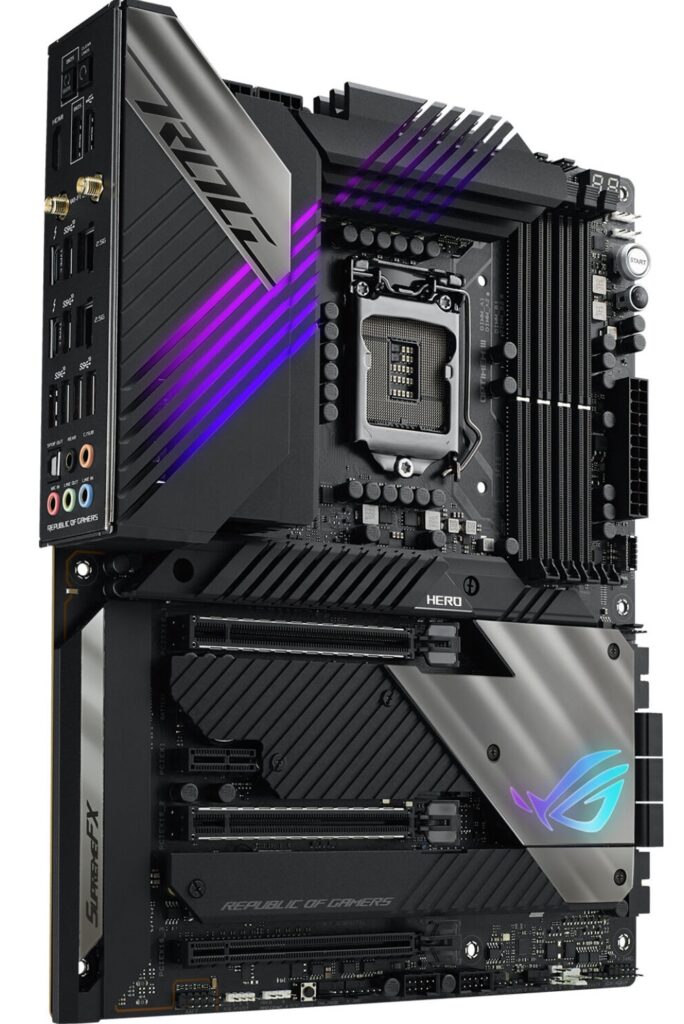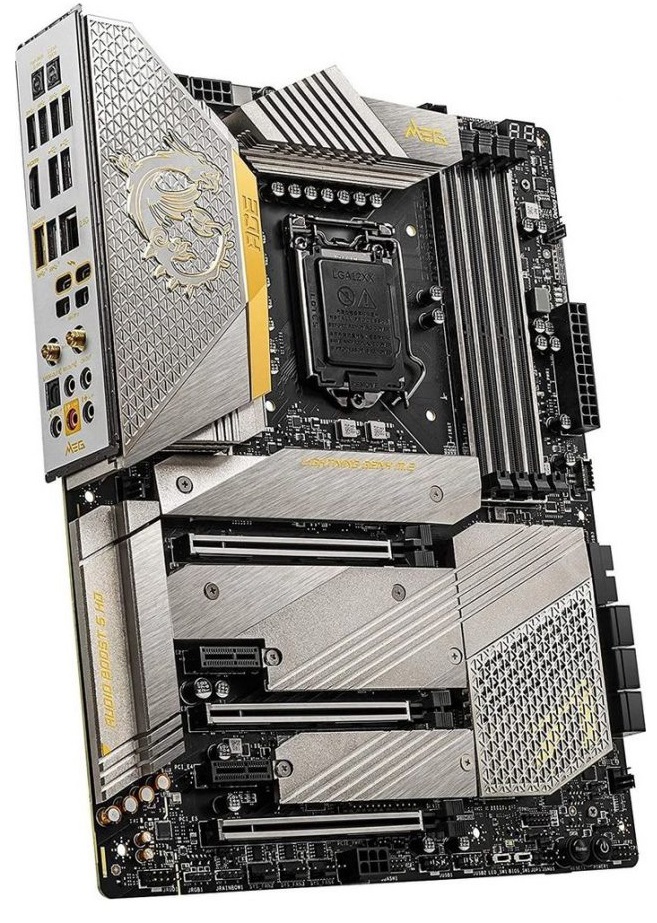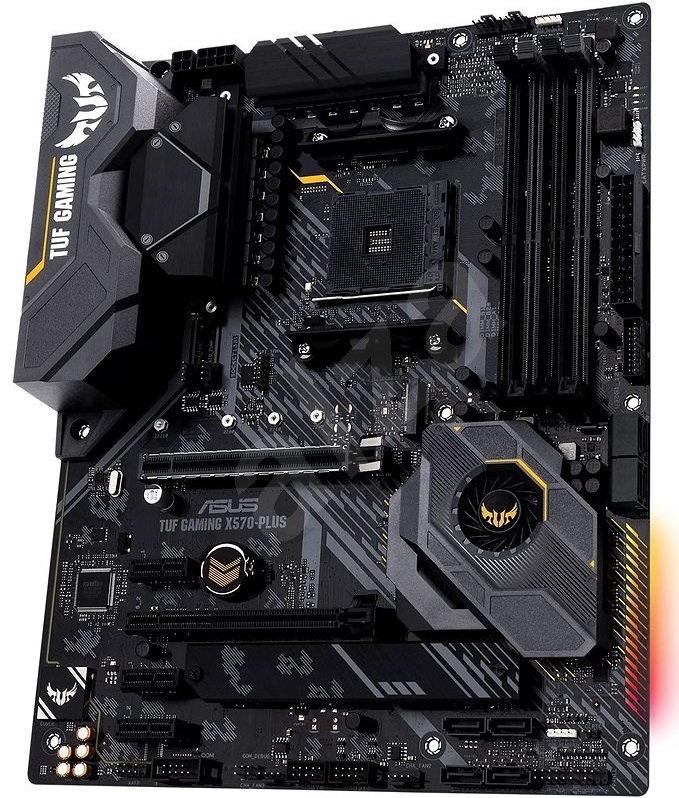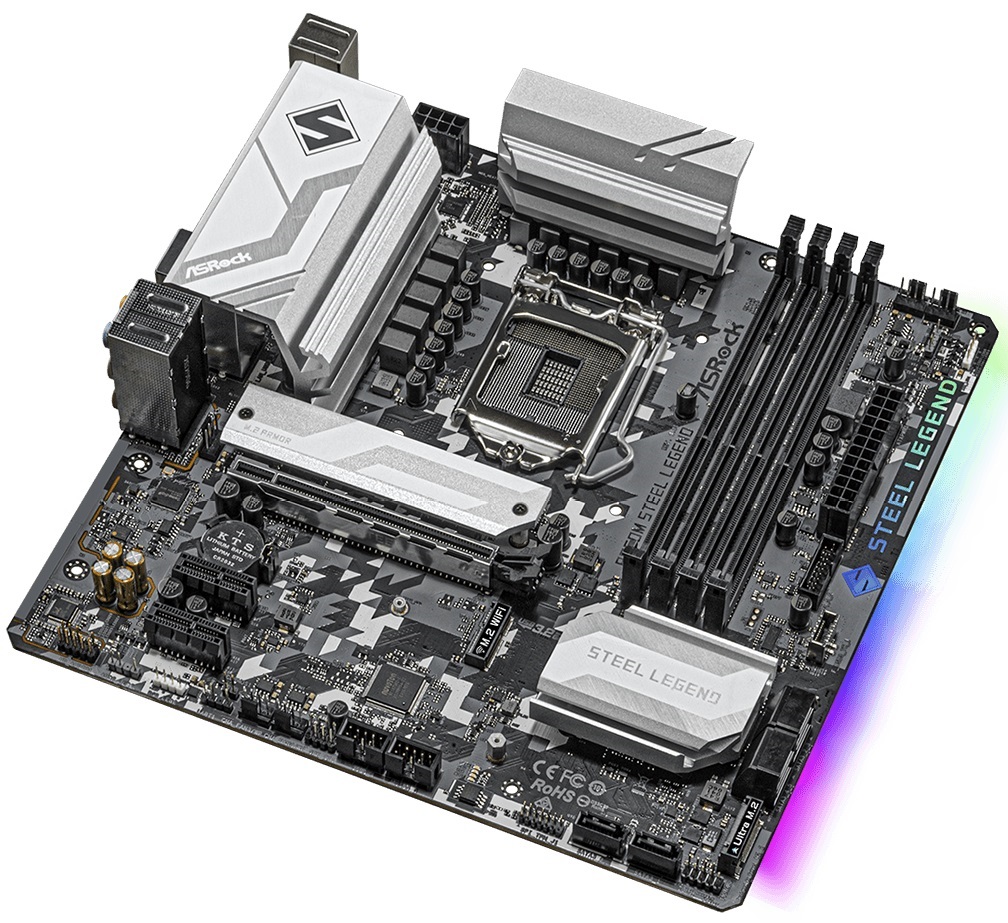Considering the complications in this process, it is certainly feasible to name just one motherboard as the best gaming motherboard, right? Well, in reality, it is not quite as straightforward as that. Since different motherboards are made for different chipsets, they really do not directly compete with one another. Therefore, it is quite difficult to provide a definitive list of the motherboards which includes both Intel and AMD platforms. For instance, the motherboards for Ryzen 5000 series will differ from the Core i9 9900K motherboards. However, it is certainly possible to compare and contrast the different motherboard offerings on the same platform. As different motherboards target different price brackets, we will provide you with a host of options in this roundup with each one being the best one in its particular category.
Best Gaming Motherboards: Intel and AMD
The AMD and Intel platforms have been much more innovative since the last 3-4 years in comparison with old times, however, AMD has been more popular because they have been producing some of the best CPUs for gaming right now. In addition to having some excellent CPUs with high core counts, the Ryzen processors also provide a better price-to-performance ratio when compared head-to-head with their Intel counterparts. AMD’s core count advantage means that several AMD CPUs are counted among the best CPUs for productivity as well. AMD has also allowed overclocking on their B-series best gaming motherboards in addition to their high-end X-series boards, which is a welcome touch. Most of AMD’s Ryzen CPUs are also cross-platform in terms of chipset which gives you an extended upgrade path. With that out of the way, here are the best AMD motherboards for gaming on platforms such as X570 and B550. The AORUS line from Gigabyte has always provided some fantastic motherboards when it comes to AMD chipsets, and the X570 AORUS Master is certainly no exception. Gigabyte has armed the X570 AORUS Master with an extraordinary power delivery system coupled with tons of features, which makes it a strong contender for the title of the best motherboards for gaming as far as AMD is concerned. The AORUS Master X570 is also included in our list for the best motherboards for Ryzen 7 3700X. This 14-phase VRM design is robust enough to handle even the most power-hungry AMD CPUs at overclocked settings.
The power delivery system of the Gigabyte AORUS Master X570 board is certainly one of its starring features. Armed with a robust 14-phase VRM design, the AORUS Master is ready to handle even the most demanding of AMD CPUs at overclocked settings. The massive VRM heatsinks ensure that the components underneath stay nice and cool even under heavy loads. This is the board to get if you are interested in overclocking a Ryzen 7 or Ryzen 9 CPU. In addition to CPU overclocking, the AORUS Master is also a strong memory overclocker as it can hit speeds of 4400MHz according to the spec, which is quite a strong number when it comes to AMD. When it comes to features, the AORUS Master once again impresses with its versatility. Gigabyte has incorporated 3 M.2 slots in the board which is quite an attractive number for an X570 motherboard, considering the PCIe Gen 4 capabilities as well. The drawback of this feature, on the other hand, is that only 4 SATA ports are accessible when all the M.2 slots are populated. In terms of aesthetics, the AORUS Master is certainly a nice-looking board with sharp angles and attractive RGB implementation. The lighting can, of course, be configured using the Gigabyte RGB Fusion software. Consequently, it is certainly not a stretch to crown the Gigabyte AORUS Master X570 as the best motherboards for gaming when it comes to AMD chipsets. It delivers a fine balance of features and VRM performance which is certainly what you want to see from a premium X570 motherboard. The price tag is definitely not for everyone, but if you are looking for the ultimate AMD motherboard (within reason), this might be it. Enthusiasts who are interested in overclocking need no introduction to the venerable Crosshair series from ASUS, which is the premium lineup of AMD motherboards under the ROG banner. The Crosshair lineup aims to provide the best of the best when it comes to the AMD platform, and the Crosshair VIII Hero is no exception as it is one of the best X570 motherboards for gaming. Now, it might not be as ridiculously overpowered as the Formula boards, but the Hero variant still packs enough punch to satisfy even the most hardcore of overclockers.
Speaking of power delivery, the Crosshair VIII Hero packs one of the most robust VRM designs of any AMD motherboard. In fact, it can directly rival the VRM performance of some of the best X399/TR4 motherboards, which is high praise for any product. ASUS has incorporated an 8-phase VRM design that enables it to handle even the Ryzen 7 and Ryzen 9 CPUs at overclocked settings. It should be noted that ASUS designs its VRM phases a bit differently, so the “phase count” cannot be compared directly to other motherboard vendors. The Crosshair VIII Hero is also packed in terms of features. ASUS has paid close attention to overclocking-specific features such as BIOS flashback, onboard power button, onboard reset switch, and built-in thermal sensors. Furthermore, the Crosshair VIII Hero can support 2 M.2 drives in the PCIe Gen 4 configuration, which is a healthy combination in 2022. The PCIe Gen 4 support is also a key improvement of the X570 platform over the older X470 motherboards. A nice feature of the Crosshair Hero is that it supports 8 onboard SATA ports which can come in handy if you use a lot of storage drives. The board does lack advanced ethernet connectivity, however, as it only supports Gigabit Ethernet and Wi-Fi which is not a premium configuration for a board of this nature. All in all, it is safe to say that ASUS has targeted the overclocking market with the Crosshair VIII Hero. Make no mistake about it, the Hero moniker does not make it any less of an overclocking beast than the much more expensive Formula variant. The board also supports a host of impressive features that make it an excellent high-end best gaming motherboard on the AMD platform. However, the hefty price tag still leaves something to be desired. The Tomahawk badge has become an incredible fan-favorite among AMD fans over the past few years due to the unparalleled success of the MSI B450 Tomahawk, which is included in our roundup of the best B450 motherboards out there. As a result, MSI used the Tomahawk naming scheme as a damage-control maneuver when their initial X570 motherboards turned out to have some known faults. The initial X570 releases from MSI were unimpressive, to say the least, therefore, the X570 Tomahawk returned to revive the brand’s image once again.
The X570 Tomahawk targets a very popular market segment of performance-focused mid-range motherboards. Not only does the Tomahawk deliver some exceptional quality in terms of VRM design, but it also does so at an impressive price bracket which is not something that you can associate with most X570 motherboards. MSI knew exactly which areas to focus on to make the Tomahawk an impressive offering for both enthusiasts and general users alike. The power delivery of the Tomahawk is akin to the much more expensive MSI X570 Unify motherboard, which is a fantastic complement for this mid-range option. Other than the power delivery, the X570 Tomahawk is a well-equipped board as well. It does not have all the bells and whistles of the premium boards such as the Crosshair VIII or the AORUS Master, but it does have the essentials while coming in at a much lower price. Both the M.2 slots leverage PCIe Gen 4 technology, which is something that is going to be a key feature going forward. Connectivity is taken care of by a 2.5 GbE Ethernet port and the inclusion of Wi-Fi, which are both welcome features in this price tag. The number of USB ports could have been increased, however, but that is pretty much the only complaint you can have at this price. More Budget AMD Motherboards: Best AM4 Motherboards Under $100 Overall, the MSI X570 Tomahawk is the ideal choice for those gamers and enthusiasts who are looking for a board with premium power delivery at a reasonable price. It cuts down on some unessential stuff but still manages to deliver an exceptional experience for the price, which places it as a strong contender for the title of the AM4 motherboard for gaming. This makes it an attractive option for both hardware enthusiasts and general gamers in 2022. AMD’s platform has gained its popularity mainly due to the impressive offerings in the budget segment of the market. Just like AMD’s incredible Ryzen CPUs that provide great value for money, the entry-level and mid-range gaming motherboard options on AMD’s chipsets are the sweet spot for most people who want to build a gaming machine on a reasonable budget. The MSI B550M Mortar is one such option that is a solid contender for the title of the best budget AMD motherboard.
More Affordable AMD Motherboards: The Best A520 Motherboards While it is certainly not as impressive as the more premium options listed above in terms of power delivery, it does hold its own if we consider the bigger picture. The B550M Mortar uses a similar VRM design to the MSI B550 Tomahawk, which is a compliment in itself since the Tomahawk’s power delivery is renowned to be the best in class when it comes to B550 motherboards. You should have no problems pairing an overclocked Ryzen 7 CPU or even a Ryzen 9 part running at stock settings with the B550M Mortar, which is more than one can ask for in a budget-oriented board. The B550M Mortar is equipped with a decent amount of features as well, considering the price tag. The two M.2 slots are a welcome addition, although only one of them supports PCIe Gen 4 connectivity, which is a limitation of the B550 platform. Furthermore, we would have liked to see the inclusion of Wi-Fi as well since that is a very commonly-used feature, however, that problem can be rectified using an inexpensive PCIe WiFi card. As far as looks go, the board does not really stand out from the crowd since it sports a very understated design. The placement of the RGB lighting could have been improved as well, but that is certainly not a dealbreaker in any way. MSI has delivered an impressive overall package in the B550M Mortar when all things are said and done. Not only is the board capable of handling high core count CPUs at overclocked settings, but it is also well-priced in a really competitive market making it the best cheap motherboard for gaming on AMD platforms. All in all, the B550M Mortar is a great choice for those buyers who are looking for a well-rounded B550 motherboard on a relatively tight budget. If this board falls out of your range, however, then you might want to consider the more affordable A320 motherboards. Intel has enjoyed the throne in gaming performance over the past decade or so, but thanks to the rise of AMD’s Ryzen 5000 series based on the Zen 3 architecture, that throne is now held by AMD. The shifting sands in this landscape have not deterred Intel, however, as they are coming back stronger than ever with their brand new 11th Gen CPUs on the Z590 platform. Intel’s platforms certainly do not hold as much attraction as AMD’s in the current situation, but they still offer a solid price-to-performance ratio if you want to build a mid-range or even an entry-level gaming machine. Here are the best Intel motherboards for gaming you can currently buy in 2022. It comes as no surprise that one of the premium motherboards from ASUS for the Intel chipset is a strong contender for the title of the best Intel motherboard for gaming. The Maximus line of motherboards from ASUS has been their high-end lineup for Intel over the past several years, and it has delivered some amazing products for enthusiasts. The ROG Maximus XIII Hero is no exception to this trend as it provides some of the most interesting and attractive features one can expect from a performance-focused board in 2022. It wouldn’t be wrong to crown this gaming motherboard as one of the best Z590 motherboards on the market right now.
Perhaps the highlight feature of the Maximus XIII Hero is its incredible power delivery system, which would even be ideal for competitive overclocking. The VRM components are cooled by massive heatsinks as well which help to keep the thermals in check under heavy load. The Maximus XIII Hero should be able to handle pretty much any Intel CPU on the market at overclocked settings, and it would be particularly well-paired with the new Intel Core i9-11900K, which can boost up to 5.3 GHz. Apart from the power delivery, the Maximus XIII Hero is jam-packed with features as well. The most important one for most users might be the inclusion of 4 M.2 slots, two of which support the PCIe Gen 4 connectivity. Furthermore, ASUS has provided Intel Thunderbolt 4 outputs on the rear I/O, which is a welcome addition to the board’s arsenal of connectivity. Wi-Fi 6E is also provided, along with two 2.5 GbE LAN ports for all your networking needs. Safe to say that you will be hard-pressed to find a missing feature in this excellent motherboard. ASUS has really hit the nail on the head with the Maximus series for the Z590 chipset, and the Hero seems to be the best offering out of the bunch. Not only does it have an excellent VRM design for your overclocking needs, but it is also packed with brilliant features for enthusiasts and general consumers alike. Our only gripe with the board is its high price tag which is among the highest on this list. While excellent, this might not be the board for you if you are looking to maximize your price-to-performance ratio. The MEG or MSI Extreme Gaming series of motherboards encompasses the premium range of boards from MSI that are mainly aimed at enthusiasts. These boards pack robust power delivery systems and a host of overclocking-friendly features that make it easier for hardware enthusiasts to fine-tune the settings to their liking. The MSI MEG Z590 ACE continues this trend and is certainly one of the Z590 motherboards on the market.
The VRM design of the Z590 ACE is certainly one of its most impressive traits. It features an incredibly robust power delivery system with premium components that make it a very capable VRM for overclocking. As a result, the Z590 ACE can handle any 10th Gen or 11th Gen Intel CPU even at overclocked settings, which is exactly what you want from a premium board such as this. This board is also included in our roundup of the best motherboards for Core i7 10700K and i9 10900K. MSI has also integrated some really hefty VRM heatsinks that keep the temperatures of the underlying components under control. As far as other features are concerned, the MSI MEG Z590 ACE is well-equipped in pretty much every department. Networking is top-notch with a 2.5 GbE Ethernet option along with the availability of Wi-Fi 6E. Storage is taken care of with the help of 4 M.2 slots and 6 SATA ports, which is a really impressive combination and should be more than plenty for even the most hardcore of storage enthusiasts (in which case you might want to check out our advanced SSD buying guide). Moreover, the board also supports Thunderbolt 4 via two USB-C ports on the rear I/O, which is always a welcome touch. All in all, the MSI MEG Z590 ACE is a really high-end motherboard that is extremely well-rounded in terms of features and VRM capability. There are no obvious red flags, although the price is a real concern as the ACE is not a budget motherboard by any stretch of the word. Enthusiasts often like to debate among ASUS vs MSI in terms of motherboards, but in this case, the better price-to-performance ratio may be provided by the ASUS Maximus XIII Hero. The ASUS TUF Gaming motherboards have garnered a bit of a fan following due to the excellent price-to-performance ratio that they usually offer, and the TUF Gaming Z590-Plus is one of the finest examples. It is not the flashiest board on our list, nor does it have the most features, but it does cover all the bases pretty efficiently and comes in at an affordable price point. This can be a solid contender for the title of the best mid-range Intel motherboard for gaming right now.
While yes, the VRM layout and efficiency of the TUF Gaming Z590-Plus is not even close to the ones that are found on the aforementioned premium motherboards, it is still more than capable of handling most 10th Gen and 11th Gen Intel CPUs at overclocked settings. We’d recommend staying away from overclocking any Core i9 parts on this motherboard as the VRM thermal management system is not the best, but it can still handle overclocking of pretty much any other Intel CPU. This grade of power delivery is good enough for most gamers considering the price point. The ASUS TUF Gaming Z590-Plus is decent in terms of features as well. The highlight of its feature list is the inclusion of three M.2 slots, which is more than what you get on some premium X570 motherboards from AMD. Six SATA ports are also available for your storage needs, which should be plenty for most general consumers. The board does have 2.5 GbE Ethernet, although it lacks any Wi-Fi connectivity which is a bit of a downer. Moreover, ASUS has also skipped the addition of Thunderbolt connectivity in the TUF Gaming Z590-Plus. You might also want to read: Gigabyte Z390 AORUS Pro Wi-Fi Review If you are in the market for a decent Intel motherboard for your latest 10th Gen or 11th Gen CPU, and value is on the top of your priority list, then the ASUS TUF Gaming Z590-Plus is an excellent choice. It shaves down on some bells and whistles to bring the price into an ideal territory for a mid-range gaming motherboard while keeping a decent VRM design and an adequate feature list. It might not be the most high-end motherboard on our list, but it is certainly one to look out for when buying your next Intel motherboard. If you are on a relatively tight budget, then going for an overclocking capable chipset such as Z590 might not be the best choice. In fact, many gamers and general consumers would be perfectly fine with mid-range chipsets such as the B-series and H-series chipsets from Intel, since not everyone wants to overclock their processor. We particularly like the latest B-series chipset B560 since it supports memory overclocking or XMP, which is something that previous midrange chipsets from Intel did not support. The ASRock B560M Steel Legend is a fine specimen of the B560 chipset and it is one of the best budget Intel motherboards out there.
Being a value-oriented motherboard, it does not have the fanciest power delivery system because it simply does not need it. As B-series chipsets do not support CPU overclocking, the VRM design does not have to be extraordinary since it is not going to be taxed nearly as much while running CPUs at stock settings. Still, we would recommend against pairing this motherboard with a Core i9 CPU since those processors rely on robust power delivery systems for their boosting behaviors, even at stock settings. The ASRock B560M Steel Legend sports some attractive features for the price point as well. It has two M.2 slots, one of which supports the PCIe Gen 4 standard so you are not missing out on modern technology here. The networking is decent with a single 2.5 GbE Ethernet port, although the inclusion of Wi-Fi would have been a welcome addition. Being a micro-ATX board, it does have few PCIe slots and also lacks in the number of USB ports, but those are compromises that are expected at this price point. Still, it has all the necessary features that are required on a day-to-day basis by an average consumer. Related Read: The Best Motherboards For Core i7 8700K Overall, the ASRock B560M Steel Legend is a great budget-oriented motherboard as far as Intel’s platform is concerned. It does lack in some areas such as power delivery and networking, but those shortcomings cannot be classified as dealbreakers in the bigger picture. The price-to-performance ratio here is excellent, which is something that takes priority over a few missing bells and whistles overall.
How To Choose A Motherboard
You might be wondering how we landed on these 8 specific motherboards out of the dozens that are available on the market for both Intel and AMD. Just like with any purchase, there are a number of factors you have to consider when you are in the market for a motherboard in 2022. Whether your platform of choice is Intel or AMD, you still have to go through a list of considerations before you can land on one specific model of motherboard that you want to pursue. In the current market, it is very easy to spend too much on a motherboard under the influence of marketing jargon and other gimmicks, which is something you should certainly avoid. Following are some of the factors that you should consider while purchasing a motherboard, so you can maximize your value for money and avoid any mishaps down the line.
Compatibility
First of all, you have to decide your platform of choice. Currently, there are only two players in the market as far as the CPU platform is concerned and those are Intel and AMD. Your choice of motherboard will be decided first and foremost by your choice of CPU so before picking out a motherboard, you should be decided on your CPU of choice beforehand. Since different chipsets support different generations of CPUs, your first order of business should be to cross-check the compatibility of your CPU with the best gaming motherboard sockets and chipsets that it supports. This would help you avoid the mistake of pairing a Core i9 9900K CPU with a B350 motherboard. Once you have confirmed your chipset of choice and checked its compatibility, you can move on to other factors like motherboard form factor, case compatibility, M.2 compatibility, memory speed compatibility, and so on. Be sure to check the compatibility of every component beforehand, since it can become a problem when you receive the board and start building your PC.
VRM and Power Delivery
This factor is more geared towards advanced users but it is something that every buyer should at least be aware of when purchasing a motherboard. The VRM or Voltage Regulating Module is a component of the motherboard that converts the direct power that is coming from the power supply into clean, stable, and usable power for the CPU. It is, therefore, a really sensitive and critical electronic component that dictates the behavior of your CPU in certain situations. The VRM quality (often known as power delivery) is especially important in the act of CPU overclocking since the overclocked CPUs require more clean and stable power. The VRM thermal performance is another factor that you should consider (which is basically the temperatures the VRM components run at when under load) and it can often be judged by the size and quality of the VRM heatsinks on the board itself. While it is not really possible to check the quality of a VRM or its thermal performance without testing the board itself, a good way to go about this process is to watch and read VRM reviews of the motherboard in question from trusted reviewers. There are tons of sources that do fantastic work in this regard and you will be gain a lot of benefit from researching the VRM quality beforehand, especially if you plan to do any extreme overclocking down the line.
Summary
While these are some of the primary factors that you should consider while making the purchase decision for a motherboard, the list certainly does not end there. To get an in-depth rundown of all the factors that are involved in the purchase of a motherboard, you should check out our comprehensive motherboard buying guide that covers this process from several different angles. Modern motherboard product pages are full of misleading terms and marketing fluff that can easily lead you to spend more money than you really need to. On the other hand, you should also avoid spending too little on your motherboard since it is a critical component of your PC build that coordinates the action of all other components. Like most other things, it is a balancing act and so concludes our guide for the best motherboard for gaming on both Intel and AMD platforms. Let us know if you agree with our picks, and feel free to discuss in the comments section if you disagree with our selections.
The 5 Best X299 Motherboards To Buy In 2022Best X399/TR4 Motherboards To Buy In 2022Best Mini ITX Motherboards for i9 9900k To Buy In 2022The 5 Best Z590 Motherboards To Buy in 2022


